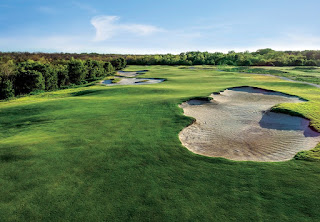Established in 1944, the AT&T Byron Nelson is the ninth-longest active tournament on Tour, and also the leading fundraiser of all events on the schedule. It consistently attracts the biggest stars on Tour, paying homage to the late Byron Nelson, and this year the field is as a strong as ever.
Number 5
Fantasy Insider
Seven major champions, three FedExCup Playoff champions, and five past winners are in this 156 player field. Seven of the last 12 winners of the AT&T Byron Nelson in the FedExCup era have advanced to the season-ending TOUR Championship. Aaron Wise comes in as defending champion, and has five top-20 finishes this season (including two in his last two starts).
Keith Mitchell finished T3 here last year as a rookie, and his victory this year at PGA National and T6 finish at Bay Hill warrants attention. Hideki Matsuyama can't seem to put together four consecutive good rounds on the green this year, but he was fifth in Strokes Gained: Putting and second in Putts made inside 10-feet here last year.
Number 2
The Course
Trinity Forest Golf Club is a par-71, 7,558 yard Ben Crenshaw and Bill Coore design built on more than 160 acres of landfill. The course is surrounded by the Great Trinity Forest, but doesn't have a single tree on the property itself. The layout resembles a windswept rolling meadow, and offers numerous spots to watch the action on multiple holes.
The most striking design on the course is the double green for hole Nos. 3 and 11, and it's one of the largest greens in all of North America as roughly 35,000 square feet. Last year the course was a scoring-fest, surrendering more birdies (1,916) than every course on the schedule but Glen Abby Golf Club.
Number 3
If You Build It They Will Come
There's a lot of room off the tee at Trinity Forest with strategic challenges of finding sight lines and proper positions for optimal second-shot angles. The closer you flirt with trouble, the greater advantage you gain. What’s the best spot to hit? Where do you want to miss? These are the puzzles players will face during the week, but there's nothing uncertain about why Trinity was constructed.
The first sentence on the course website makes it crystal clear: This club "was created to explicitly attract prestigious golf championships back to Dallas." It's been 55 years since the Dallas Metroplex last hosted a major championship, staging the PGA Championship in 1963 at the Dallas Athletic Club, and prior to that the U.S. Open in 1952 at the Northwood Club. The million-dollar question everyone will be asking this week is just seven words long: "Is Trinity Forest worthy of a major?"
Number 2
What Will it Take to Win?
You have to challenge hazards at Trinity Forest if you want to score, but you still need to play smart to avoid the big number. The course is wide open enough that you can stay on the short grass all day, but you won’t even get a whiff at birdies if you’re not aggressive.
Fairway bunkers are placed where the best approach shots into the green will be, and finding the wrong sides will create bad angles and set putting surface slopes against you. Mistakes will be magnified, but great shots will be as well.
Number 1
Something Different on Every Hole
Trinity Forest is a course you have to think about from the green backwards because they all have personalities of their very own. The double green shared by the 3rd and 11th holes is roughly the size of a football field. On the 8th green different contours can be a benefit or detriment, and balls that hit within a yard of each other can end up 60-feet or more in different directions.
How about a drivable hole that favors a short hitter, or hitting a wood or hybrid into a green that you can't see? The 315-yard, par-4, No. 5 often plays downwind with just 207 yards to carry the front bunker. Yet the safe play is short because the green is severely perched and slopes back to front. The 630-yard, par-5, No, 14 plays uphill into the wind. But trying to reach in two will require complete fearlessness (it's essentially a blind second shot). These are two more illustrations of Trinity Forest's unique feel and master plan to test that five-and-one-half inch space between your ears.






No comments:
Post a Comment